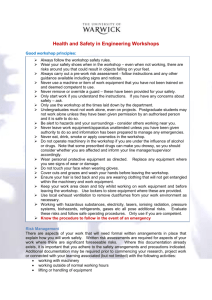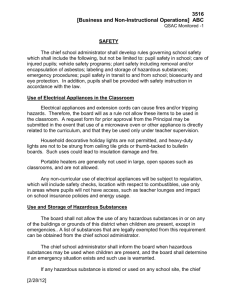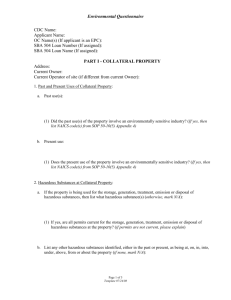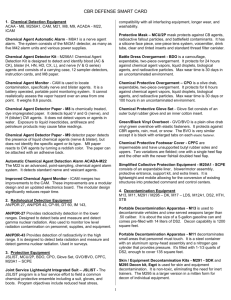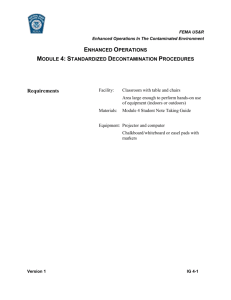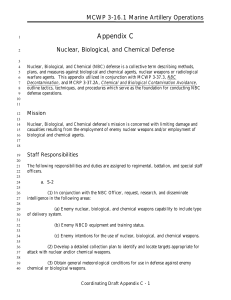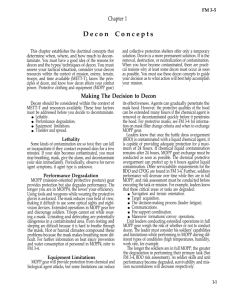Certification Levels - LSU Fire and Emergency Training Institute
advertisement
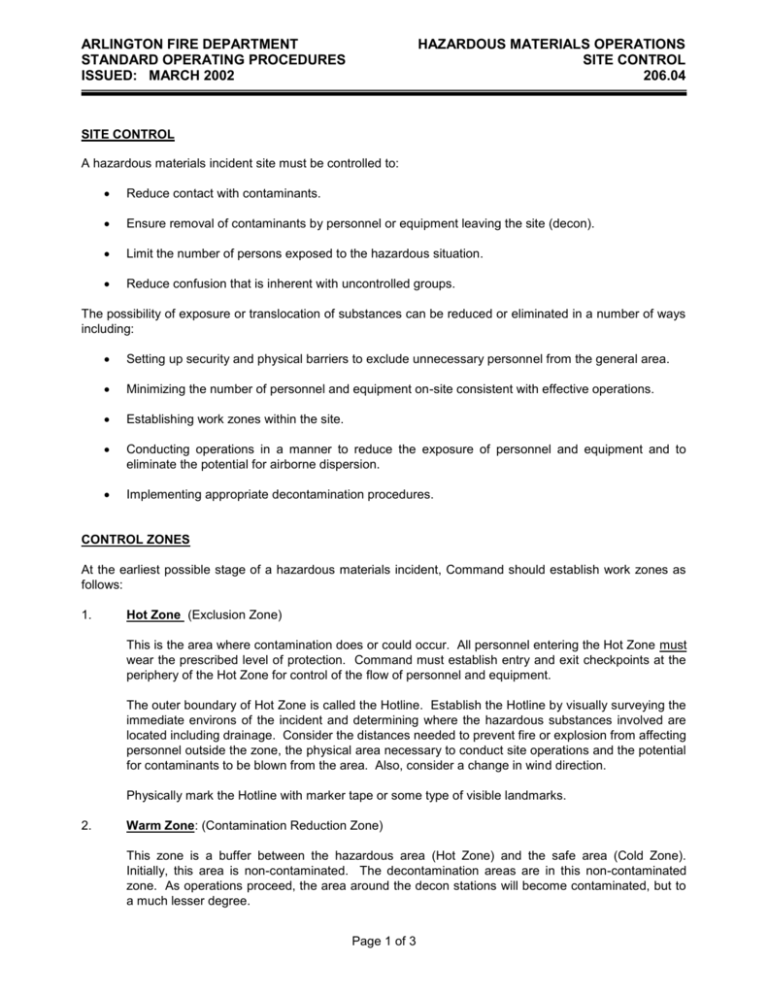
ARLINGTON FIRE DEPARTMENT STANDARD OPERATING PROCEDURES ISSUED: MARCH 2002 HAZARDOUS MATERIALS OPERATIONS SITE CONTROL 206.04 SITE CONTROL A hazardous materials incident site must be controlled to: Reduce contact with contaminants. Ensure removal of contaminants by personnel or equipment leaving the site (decon). Limit the number of persons exposed to the hazardous situation. Reduce confusion that is inherent with uncontrolled groups. The possibility of exposure or translocation of substances can be reduced or eliminated in a number of ways including: Setting up security and physical barriers to exclude unnecessary personnel from the general area. Minimizing the number of personnel and equipment on-site consistent with effective operations. Establishing work zones within the site. Conducting operations in a manner to reduce the exposure of personnel and equipment and to eliminate the potential for airborne dispersion. Implementing appropriate decontamination procedures. CONTROL ZONES At the earliest possible stage of a hazardous materials incident, Command should establish work zones as follows: 1. Hot Zone (Exclusion Zone) This is the area where contamination does or could occur. All personnel entering the Hot Zone must wear the prescribed level of protection. Command must establish entry and exit checkpoints at the periphery of the Hot Zone for control of the flow of personnel and equipment. The outer boundary of Hot Zone is called the Hotline. Establish the Hotline by visually surveying the immediate environs of the incident and determining where the hazardous substances involved are located including drainage. Consider the distances needed to prevent fire or explosion from affecting personnel outside the zone, the physical area necessary to conduct site operations and the potential for contaminants to be blown from the area. Also, consider a change in wind direction. Physically mark the Hotline with marker tape or some type of visible landmarks. 2. Warm Zone: (Contamination Reduction Zone) This zone is a buffer between the hazardous area (Hot Zone) and the safe area (Cold Zone). Initially, this area is non-contaminated. The decontamination areas are in this non-contaminated zone. As operations proceed, the area around the decon stations will become contaminated, but to a much lesser degree. Page 1 of 3 ARLINGTON FIRE DEPARTMENT STANDARD OPERATING PROCEDURES ISSUED: MARCH 2002 HAZARDOUS MATERIALS OPERATIONS SITE CONTROL 206.04 The boundary of the Warm Zone is called the Contamination Control Line. Mark this line by tape or some other physical barrier. 3. Cold Zone: (Support Zone) The Cold Zone, the outermost part of the site, is considered a non-contaminated or clean area. Locate support equipment in the zone and restrict traffic to authorized response personnel. Since normal work clothes are appropriate within this zone, potentially contaminated personal clothing, equipment, and samples are not permitted, but are left in the Warm Zone until they are decontaminated. Consider the following criteria when establishing area dimensions and boundaries: Physical and topographical features of the site. Weather conditions. Field/lab measurements of air contaminants and environmental samples. Air dispersion calculations. Potential for explosion and flying debris. Physical, chemical, toxicological, and other characteristics of the substances present. Clean-up activities required. Decontamination procedures. Potential for exposure. Proximity to residual or industrial areas. Monitoring and sampling. MODIFICATIONS The use of a three-zone system, access control points, and exacting decon procedures provides a reasonable assurance against the translocation of contaminating substances. This site control system is based on a worst-case situation. Command may use less stringent site control and decon procedures if more definitive information is available on the types of substances involved and hazards they present. This information can be obtained through air monitoring, instrument survey, sampling, and technical data concerning the characteristics and behavior of materials present. SITE ENTRY 1. Personnel must use the "buddy system" when wearing respiratory protective equipment. As a minimum, a third person, suitably equipped as a safety backup, is required during initial entries. A two-person safety team is preferred. Page 2 of 3 ARLINGTON FIRE DEPARTMENT STANDARD OPERATING PROCEDURES ISSUED: MARCH 2002 HAZARDOUS MATERIALS OPERATIONS SITE CONTROL 206.04 2. Personnel should remain close together to assist each other during emergencies. 3. Command must designate entrance and exit locations and determine emergency escape routes. Warning signals for site evacuation must be established. 4. The initial entry team members must maintain communications using radios, hand signals, signs, and other means at all times. Pre-arrange emergency communications in case of radio failure, site evacuation, and other reasons (see hand signals on following page). Of immediate concern to initial entry personnel are atmospheric conditions that could affect their immediate safety. These conditions are airborne toxic substances, combustible gases or vapors, lack of oxygen, and to a lesser extent, ionizing radiation. Command must establish priorities for monitoring these potential hazards after a careful evaluation of conditions. Page 3 of 3


